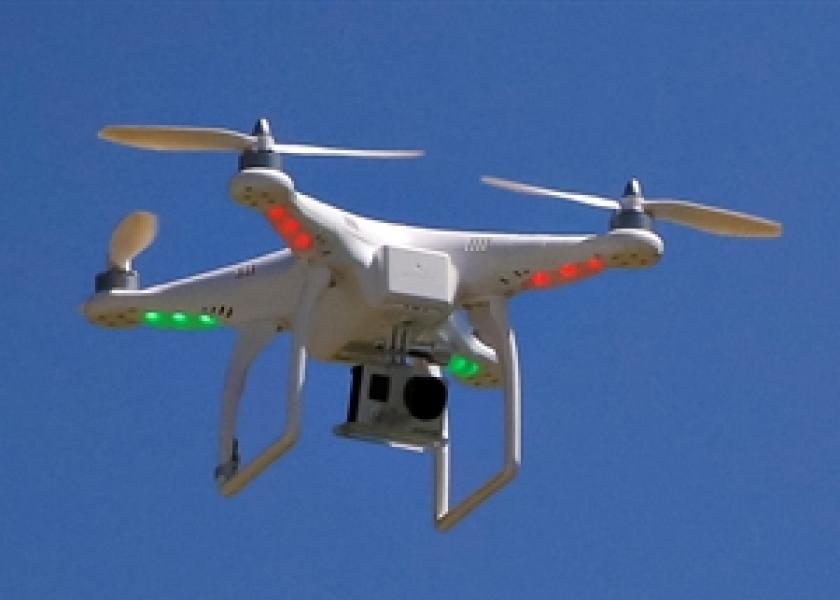Drone on the Range

By: Linda Geist, University of Missouri Extension
For centuries, farmers have braved the elements to walk their land to check for problems ranging from wind damage and calving cows to pests and predators.
Unmanned aerial vehicles may save farmers time and money with bird’s-eye views of farmland, says Bill Wiebold, University of Missouri Extension agronomy specialist. It opens up endless possibilities for precision agriculture, he said.
Wiebold’s recent talks on drones during MU Extension crop conferences have drawn attention from producers anxious to learn how to use them.
Wiebold and other MU researchers have been studying how farmers can use the new technology.
Drones suited for farm applications vary widely in cost and size.
Entry-level aircraft cost $500-$1,500 and can fly for 10-20 minutes without recharging batteries. Most weigh less than 5 pounds, have a wingspan of less than 3 feet and travel under 30 mph. For about $300, farmers can install cameras in drones that can send clear still or video images to a smartphone.
Drones can provide information to answer questions like "How bad was last night’s hail storm? Are all of my cows on the north 40? Does my corn need more nitrogen?"
Entry-level systems can be guided by a handheld remote control. More sophisticated vehicles can be programmed to fly designated routes using GPS and GIS technology, but only skilled flyers should try this type of aircraft, Wiebold said.
The uses are as varied as Missouri farmland, Wiebold said.
Entomologists may find the devices especially helpful for directed scouting of pests. Drones can collect information on plants that have grown to heights that make it difficult to walk through narrow rows.
Additionally, farmers can use the unmanned devices to document conditions when applying for government programs such as crop insurance.
While much of the recent media attention has centered on unmanned aircraft as a way to deliver packages, commercial agriculture likely will be the largest beneficiary of drone technology, Wiebold said.
Drone technology has raised concerns about privacy issues, but drones used in agriculture likely are less controversial than those used for commercial applications. Currently, the Federal Aviation Administration (FAA) does not allow drone use for commercial purposes. Farmers must follow FAA guidelines for hobbyists.
Unmanned aircraft are restricted to airspace no higher than 400 feet. If flights occur within 3 miles of an airport, airport officials must be notified. Recent information suggests that producers are permitted to fly over areas they farm, Wiebold said. However, regulations may be updated, so farmers should follow FAA announcements.
Flying near spectators is not recommended until operators become skilled. Populated areas should be avoided. Wiebold suggests that until a farmer gains confidence and skill, drones should be kept within line of sight. Winds of 20 mph or greater may present problems with stability and image quality, he said.
Farmers in Japan and Brazil have used drone technology for decades. As much as 30 percent of Japan’s rice fields were sprayed by unmanned vehicles in 2010, according to the nonprofit Association for Unmanned Vehicle Systems International (AUVSI).
In 2012, Congress directed the FAA to grant unmanned aircraft access to U.S. skies by 2015. The FAA has released a "road map" for potential drone use and six federally designated test sites have been approved.
A study by the AUVSI estimates that drone use could create 70,000 new jobs in the U.S. in five years after FAA approval. The group also estimates that 90 percent of the economic activity will come from precision agriculture and public safety applications.







